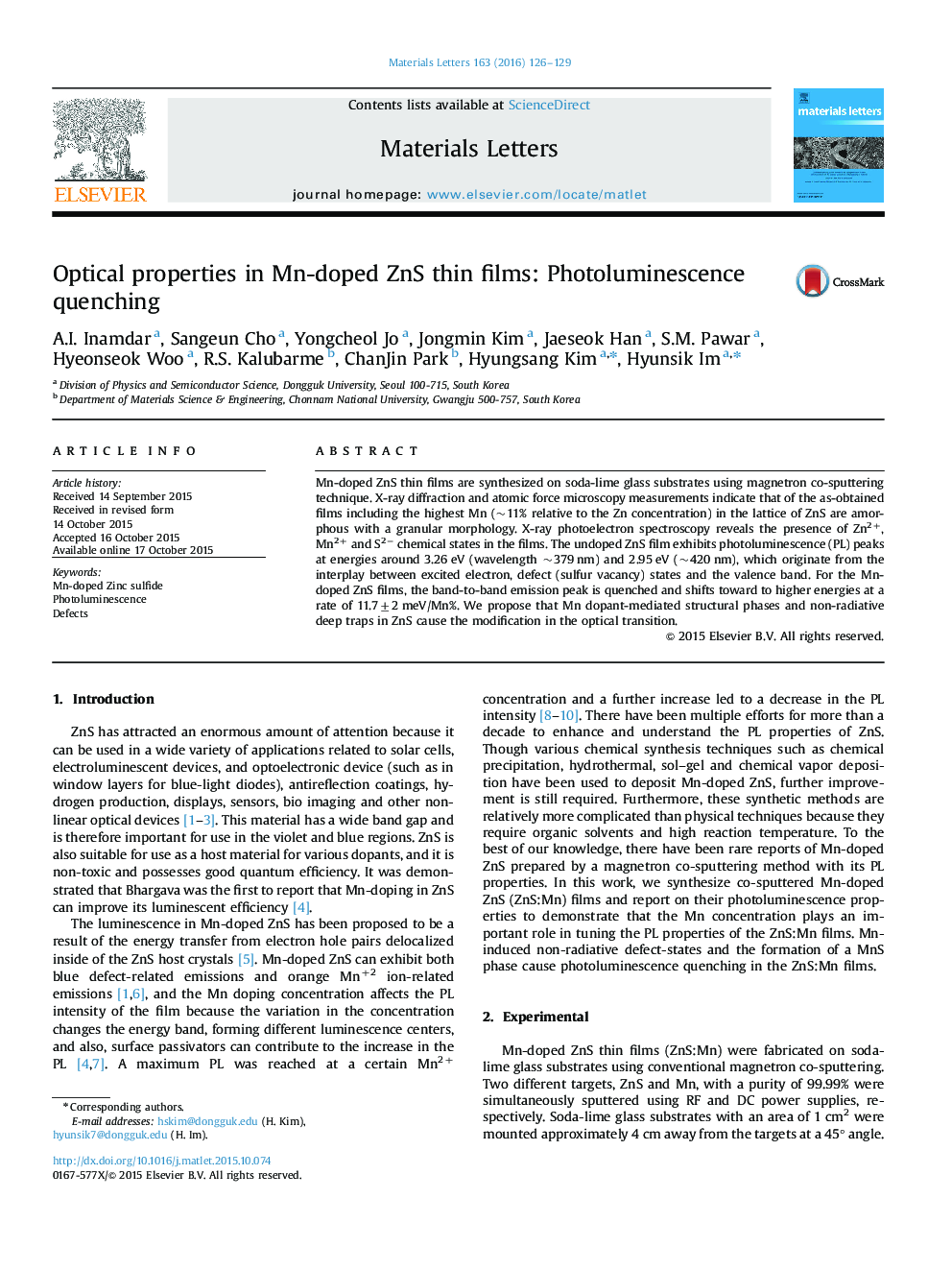| Article ID | Journal | Published Year | Pages | File Type |
|---|---|---|---|---|
| 1641754 | Materials Letters | 2016 | 4 Pages |
Abstract
Mn-doped ZnS thin films are synthesized on soda-lime glass substrates using magnetron co-sputtering technique. X-ray diffraction and atomic force microscopy measurements indicate that of the as-obtained films including the highest Mn (~11% relative to the Zn concentration) in the lattice of ZnS are amorphous with a granular morphology. X-ray photoelectron spectroscopy reveals the presence of Zn2+, Mn2+ and S2â chemical states in the films. The undoped ZnS film exhibits photoluminescence (PL) peaks at energies around 3.26 eV (wavelength ~379 nm) and 2.95 eV (~420 nm), which originate from the interplay between excited electron, defect (sulfur vacancy) states and the valence band. For the Mn-doped ZnS films, the band-to-band emission peak is quenched and shifts toward to higher energies at a rate of 11.7±2 meV/Mn%. We propose that Mn dopant-mediated structural phases and non-radiative deep traps in ZnS cause the modification in the optical transition.
Keywords
Related Topics
Physical Sciences and Engineering
Materials Science
Nanotechnology
Authors
A.I. Inamdar, Sangeun Cho, Yongcheol Jo, Jongmin Kim, Jaeseok Han, S.M. Pawar, Hyeonseok Woo, R.S. Kalubarme, ChanJin Park, Hyungsang Kim, Hyunsik Im,
